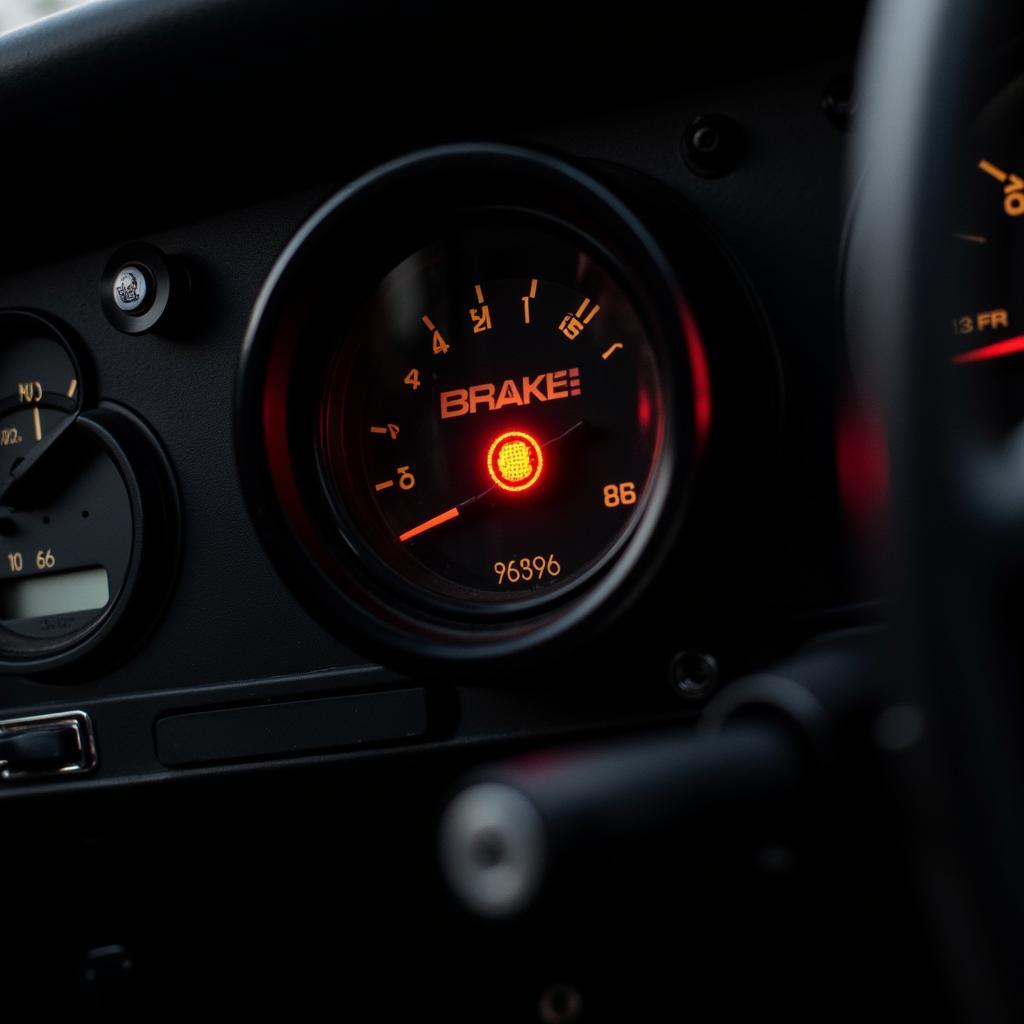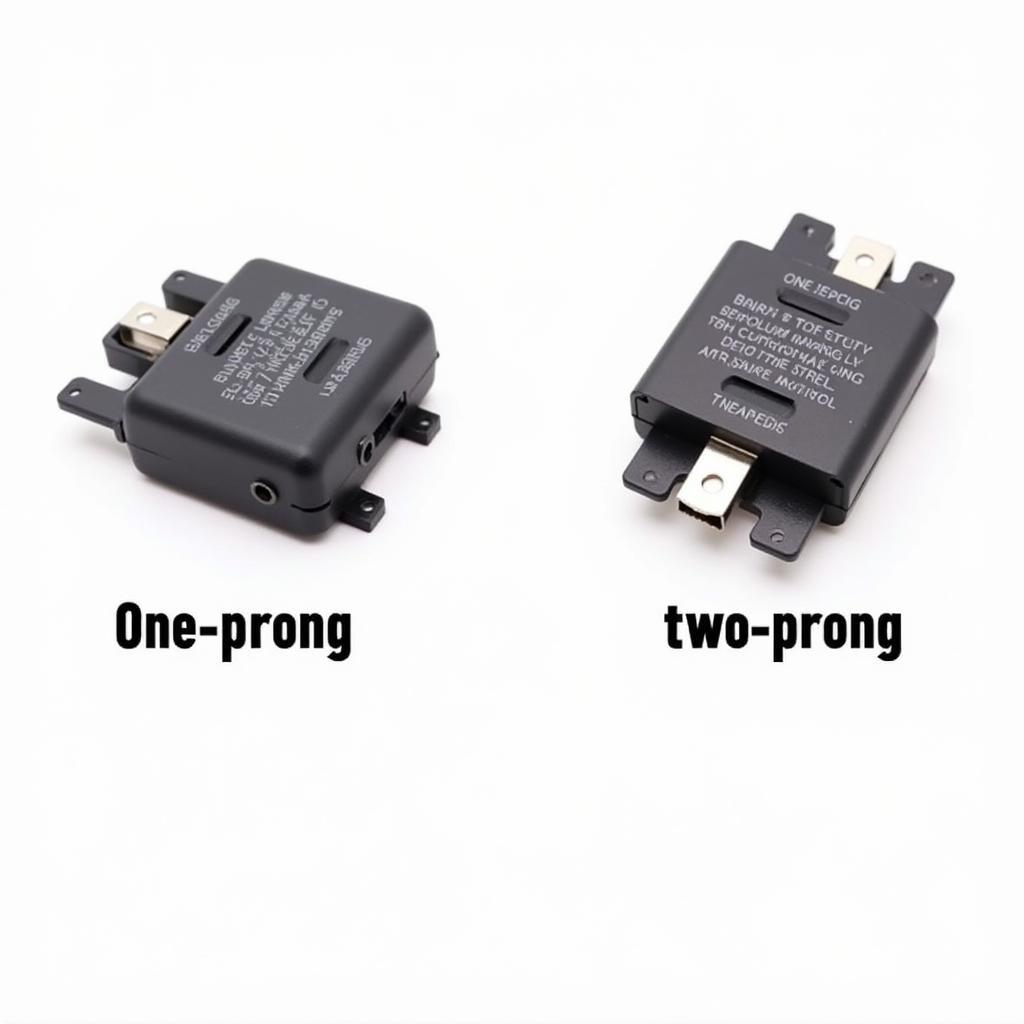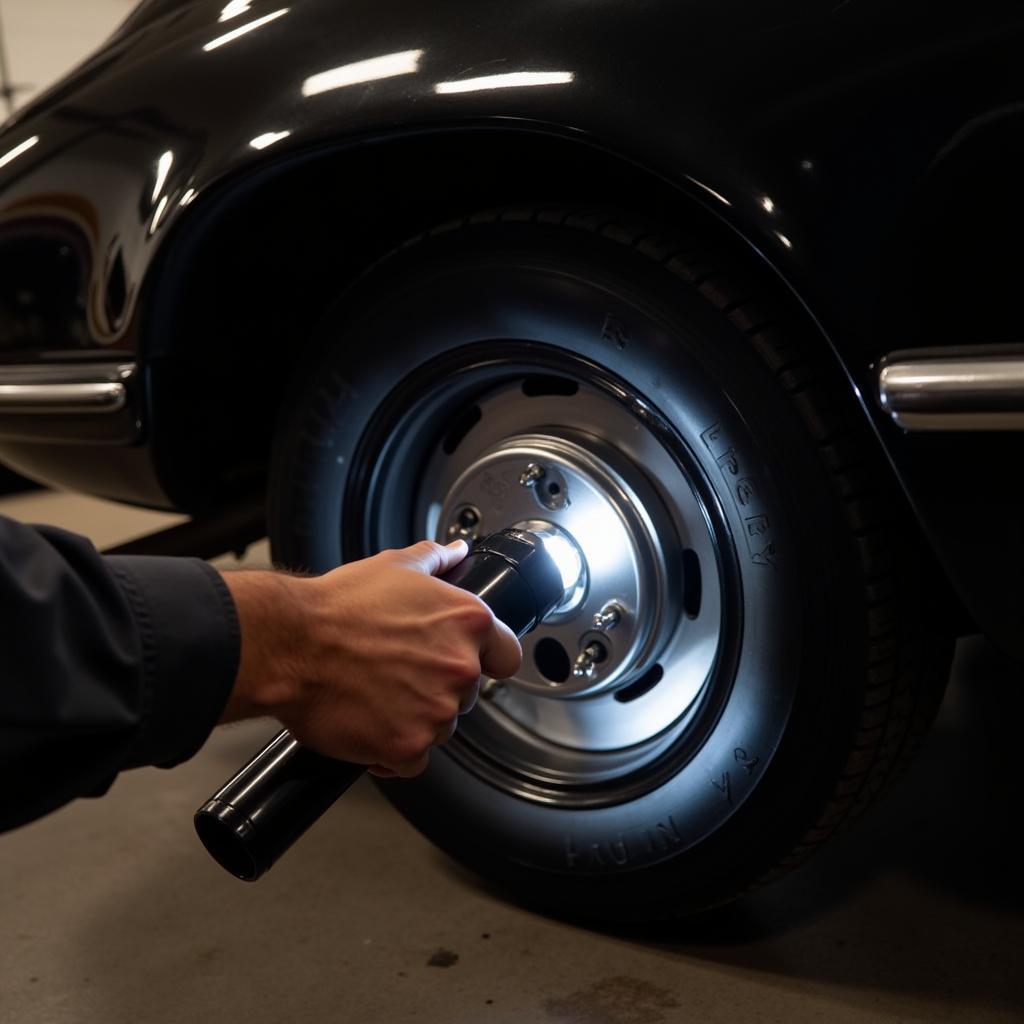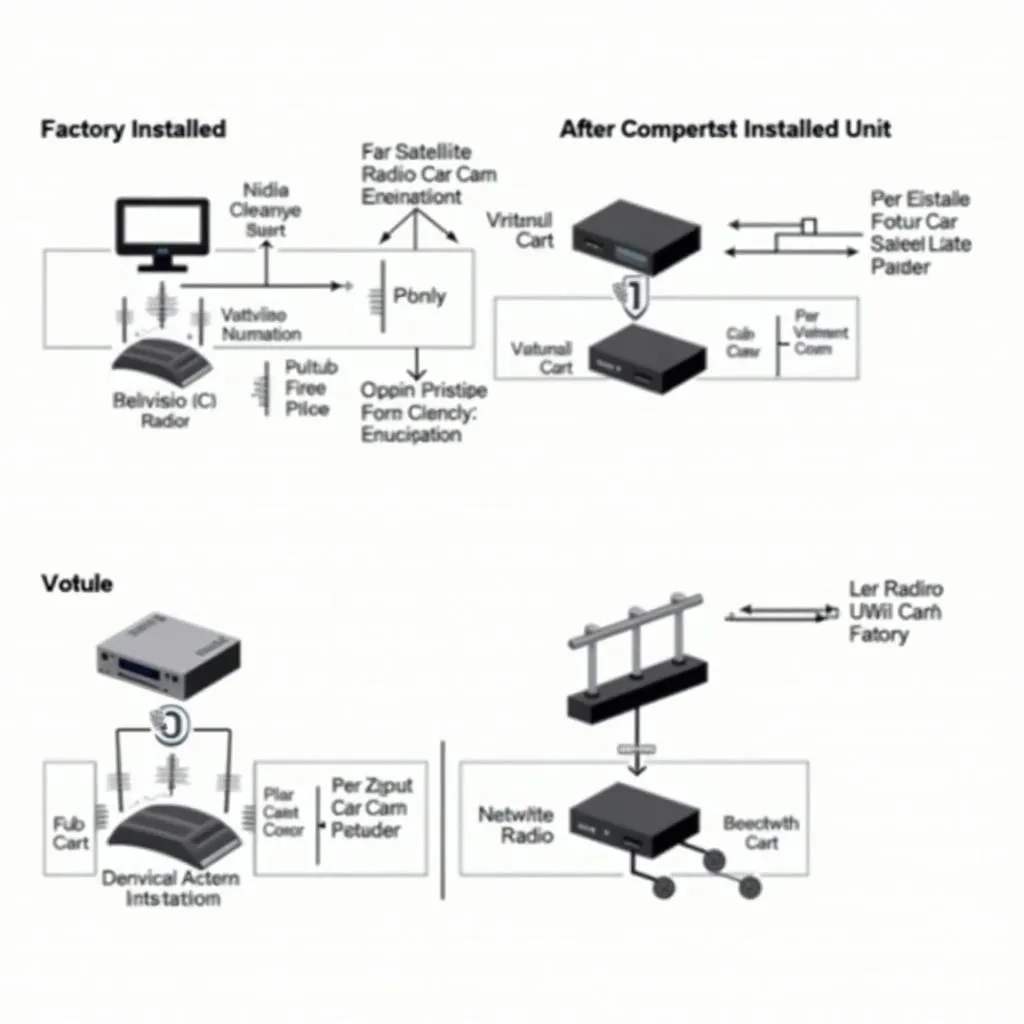The iconic 1969 Porsche 911, a dream car for many, is not without its quirks. One such quirk that often puzzles owners is the brake failure warning switch. Specifically, the age-old question: one prong or two? This article dives into the intricacies of this seemingly simple component, shedding light on its function, common issues, and how to diagnose problems remotely.
Understanding the role of the brake failure warning switch is crucial for any 1969 Porsche 911 owner. This switch, often located under the dashboard near the brake fluid reservoir, serves as a critical safety feature. Its primary function is to alert the driver of a potential brake system failure. When the system detects an imbalance, typically a drop in brake fluid pressure, this switch activates a warning light on the dashboard.
 1969 Porsche 911 Dashboard Brake Warning Light
1969 Porsche 911 Dashboard Brake Warning Light
Now, let’s address the elephant in the room: the one prong versus two prong dilemma. Early models of the 1969 Porsche 911 were indeed equipped with a one-prong brake failure warning switch. However, as safety regulations evolved, Porsche transitioned to a two-prong system. The key difference lies in the additional safety mechanism provided by the second prong.
The two-prong switch incorporates a secondary circuit that monitors for potential switch failures. In simpler terms, if the switch itself malfunctions, the second circuit triggers the warning light, ensuring the driver is alerted even if the primary circuit fails. This redundancy adds an extra layer of safety, vital in a high-performance vehicle like the 1969 Porsche 911.
 One Prong vs Two Prong Brake Failure Warning Switch
One Prong vs Two Prong Brake Failure Warning Switch
Diagnosing issues with the brake failure warning switch remotely can seem daunting, but a systematic approach can help pinpoint the problem.
First, it’s essential to determine which type of switch your 1969 Porsche 911 has. This can be done visually by inspecting the switch itself or by consulting the vehicle’s service manual. Once you know whether you’re dealing with a one or two-prong switch, you can proceed with further diagnosis.
“Remember,” says John Smith, a seasoned automotive electrical engineer specializing in classic Porsche models, “a visual inspection of the wiring harness leading to the switch is crucial. Look for any signs of damage, corrosion, or loose connections.”
Indeed, loose connections or damaged wires can disrupt the signal flow, leading to a false warning light. If the wiring appears intact, the next step involves checking the brake fluid level. A low fluid level can trigger the warning light even if the switch is functioning correctly.
“Always ensure,” Smith emphasizes, “that you’re using the correct type and specification of brake fluid recommended for your 1969 Porsche 911. Using the wrong fluid can damage the brake system components, including the warning switch.”
 Checking the Brake Fluid Reservoir
Checking the Brake Fluid Reservoir
If both the wiring and fluid level check out, the switch itself might be faulty. In such cases, replacing the switch is recommended. While a seemingly straightforward task, it’s crucial to source the correct replacement part, ensuring it matches the original switch’s specifications (one-prong or two-prong).
In conclusion, the brake failure warning switch, though a small component, plays a significant role in the safety of your 1969 Porsche 911. Understanding its function and knowing how to diagnose potential issues is crucial for any owner. Remember, a well-maintained 1969 Porsche 911 is not just a classic car—it’s a testament to engineering excellence and a joy to drive.

